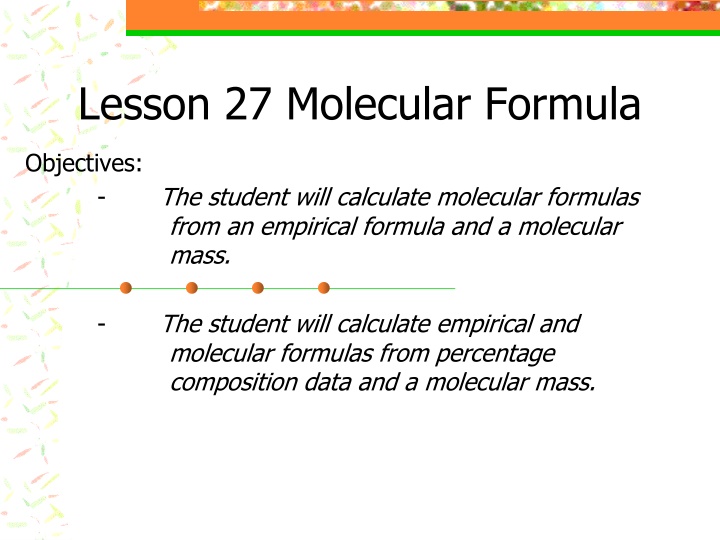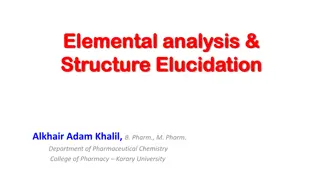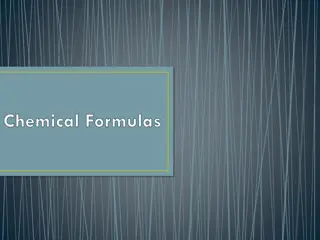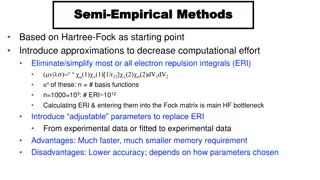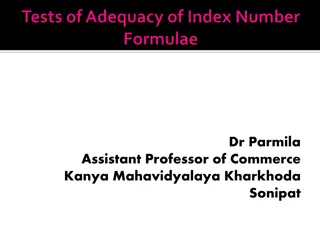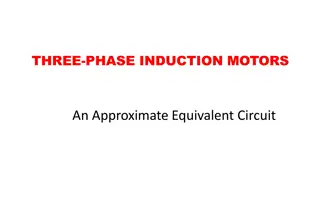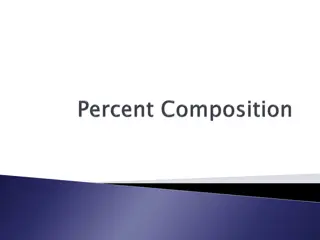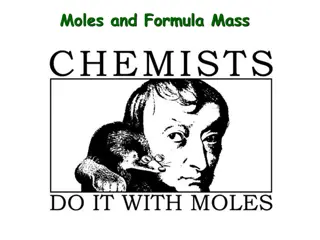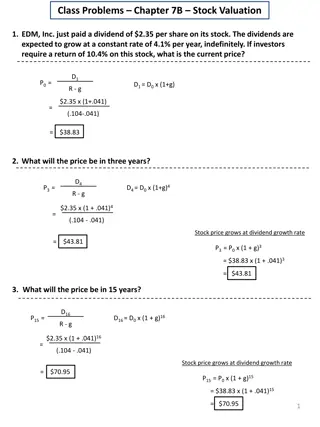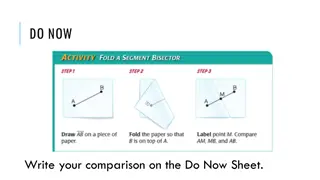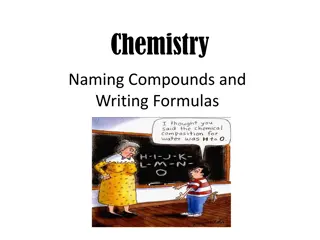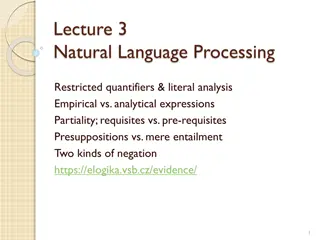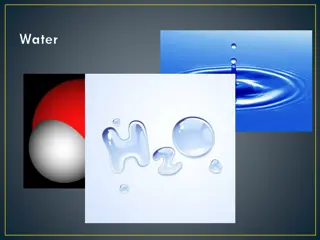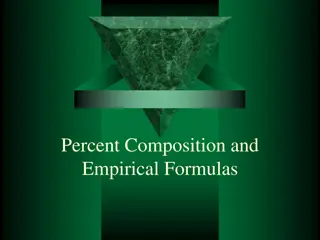Molecular Formulas: Empirical vs. Molecular, Calculations Explained
The difference between empirical and molecular formulas, how they are determined experimentally, and examples of compounds with different formulas. Learn how to calculate molecular formulas from empirical data and molecular weight, with step-by-step explanations and illustrations. Master the concepts and techniques for solving problems related to molecular formulas in chemistry.
Uploaded on Feb 22, 2025 | 1 Views
Download Presentation

Please find below an Image/Link to download the presentation.
The content on the website is provided AS IS for your information and personal use only. It may not be sold, licensed, or shared on other websites without obtaining consent from the author.If you encounter any issues during the download, it is possible that the publisher has removed the file from their server.
You are allowed to download the files provided on this website for personal or commercial use, subject to the condition that they are used lawfully. All files are the property of their respective owners.
The content on the website is provided AS IS for your information and personal use only. It may not be sold, licensed, or shared on other websites without obtaining consent from the author.
E N D
Presentation Transcript
Lesson 27 Molecular Formula Objectives: - The student will calculate molecular formulas from an empirical formula and a molecular mass. - The student will calculate empirical and molecular formulas from percentage composition data and a molecular mass.
Notes start on page 225 Watch my video for help Homework is pages 227 all and page 228 odd Remind me if you are stuck- I m here!!
I. Empirical Formulas A. Up to this point, we have represented formulas in two different ways: i. Lewis Structures ii. Chemical formulas B. Now, we will look at the difference between empirical formulas and molecular formulas
II.Empirical formulas are determined experimentally A. Many times when scientists discover a new compound, they determine the empirical formula from composition data. B. They can also use other methods to determine the molecular mass of the compound present. This can be used to determine a molecular formula.
III. Molecular formulas A. An empirical formula just tells you how much of each element is present, but in lowest number ratios. B Molecular formula gives type and actual number of elements in a compound. C. Many different compounds can have the same empirical formula, but they may not have the same molecular formula. D. Also, many times the empirical formula for a compound is the same as the molecular formula sometimes, it is not.
E. Examples all these have CH2O as their empirical formula 1. Formaldehyde CH2O poisonous 2. Acetic Acid (vinegar) C2H4O2 edible 3. Glucose C6H12O6 sugar
IV. Molecular formulas are determined from molar mass A. Molecular formulas are multiples of the empirical formulas B. X (empirical formula) = molecular formula C. X will be a whole number. D. To determine X, divide the molecular formula mass by the empirical formula mass
Molecular Formula Calculations: In calculations of molecular formula, you will be given percent compositions and the molecular weight of the entire compound. 1. 2. 3. 4. Calculate the empirical formula as shown earlier. Calculate the empirical mass of the empirical formula. Divide the given molecular mass by the empirical mass. The answer should be a whole number, multiply this through the subscripts of the empirical formula to get the molecular formula.
Example: A compound is 26.7% carbon, 2.2% hydrogen and 71.1% oxygen. Its molecular mass is 90g/mol. 26.7% C = 26.7g C (1 mole/ 12.011)= 2.22296 moles C 2.2% H= 2.2g H(1 mole/ 1.0079)= 2.182756 moles H 71.1%O=71.1g O(1 mole/15.999)= 4.444 moles O
2.182756 is the smallest so divide all by this C 2.22296/2.182756 = 1.018 = about 1 H 2.182756/2.182756 = 1 O 4.444/ 2.182756 = 2.0359 = about 2 Use these numbers as the subscripts, giving you CHO2
Now take this formula to calculate the empirical mass C- 1 x 12.011 = H- 1 x 1.0079 = O- 2 x 15.999 = 12.011 1.0079 31.998 45.169 empirical mass
Now divide the molecular mass you were given in the problem, by the empirical mass that you calculated: 90/45.169 = 2 take this number and multiply all the subscripts in the empirical formula by it to get the molecular formula CHO2 becomes C2H2O4
Examples: A refrigerant, Freon-12, is composed of 9.93% Carbon, 58.64% Chlorine, and 31.43% Fluorine. What is its molecular formula is it has a molar mass of 120.91g/n? 1. % grams 2. Grams moles Divide by smallest number of moles 4. Determine empirical formula 5. Find empirical mass 6. Divide molecular mass by empirical mass 7. Multiply subscripts of empirical formula by the answer in step 6 3.
FIND THE EMPIRICAL FORMULA AND MOLECULAR FORMULA A compound has a make up of: 23.88 % Sodium 42.89% Phosphorus 33.23% Oxygen And has a Molecular Mass of 1,440 g/mol
Answer Emperical formula= Na3P4O6 Molecular formula = Na15P20O3
